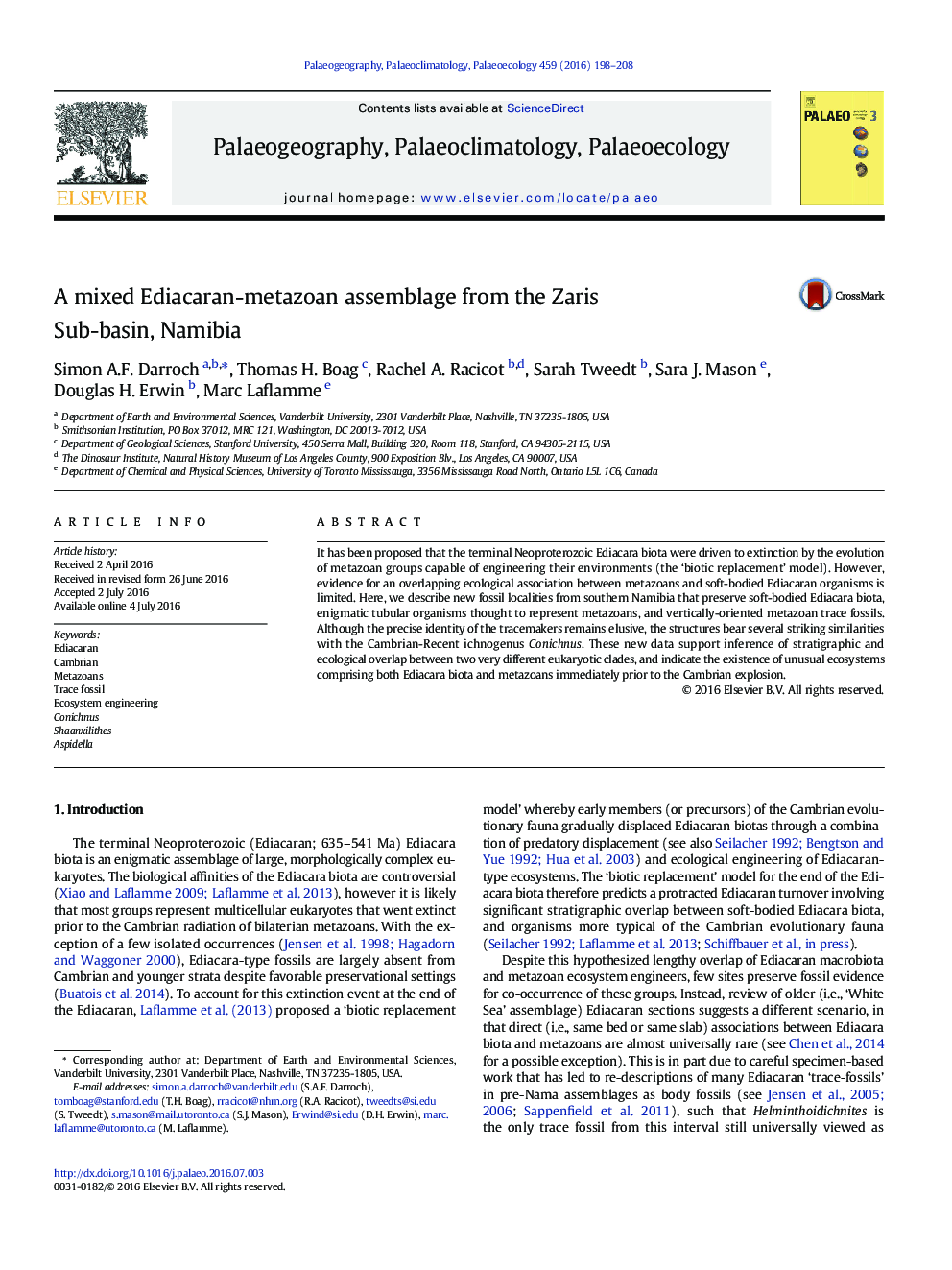| Article ID | Journal | Published Year | Pages | File Type |
|---|---|---|---|---|
| 4465632 | Palaeogeography, Palaeoclimatology, Palaeoecology | 2016 | 11 Pages |
•We report the discovery of new fossil sites in the Zaris subbasin, Namibia, preserving soft-bodied Ediacara biota, metazoan body fossils, and metazoan trace fossils•Close stratigraphic relationships among these fossils illustrate that Ediacarans and metazoans occupied the same communities prior to the Cambrian•Spatial relationships suggest niche partitioning between Ediacara biota and metazoan trace makers latest Ediacaran ‘transitional’ ecosystems•Although the nature of biotic interactions between these groups is unclear, these fossils fulfill a prediction of the ‘biotic replacement model’•This supports the notion that the extinction and decline of the Ediacara biota was driven first by metazoan radiation and ecosystem engineering
It has been proposed that the terminal Neoproterozoic Ediacara biota were driven to extinction by the evolution of metazoan groups capable of engineering their environments (the ‘biotic replacement’ model). However, evidence for an overlapping ecological association between metazoans and soft-bodied Ediacaran organisms is limited. Here, we describe new fossil localities from southern Namibia that preserve soft-bodied Ediacara biota, enigmatic tubular organisms thought to represent metazoans, and vertically-oriented metazoan trace fossils. Although the precise identity of the tracemakers remains elusive, the structures bear several striking similarities with the Cambrian-Recent ichnogenus Conichnus. These new data support inference of stratigraphic and ecological overlap between two very different eukaryotic clades, and indicate the existence of unusual ecosystems comprising both Ediacara biota and metazoans immediately prior to the Cambrian explosion.
